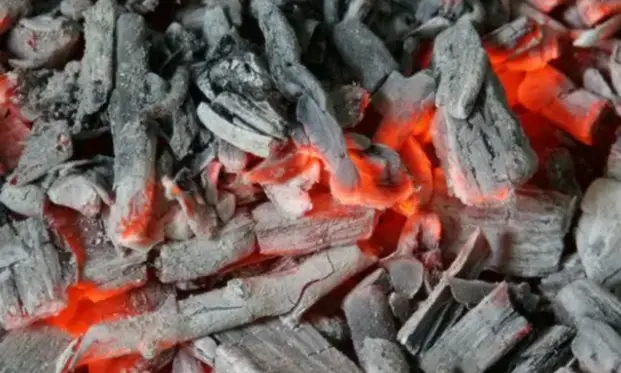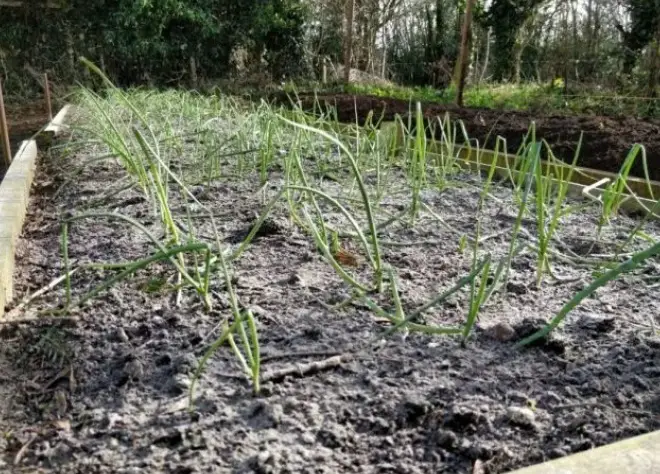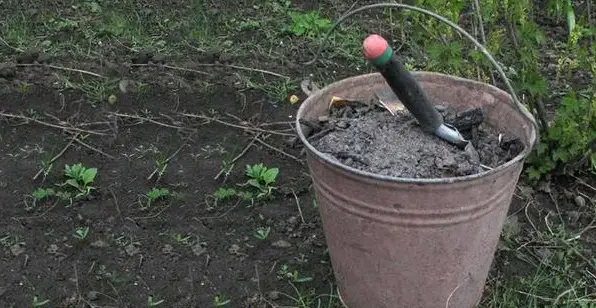Are you looking for ways to improve your garden and make it thrive? Wood ash may be the perfect solution! It’s natural, affordable, and beneficial in many ways.
Wood ash has been used as fertilizer since ancient times. Its high mineral content provides essential nutrients that plants need to grow strong and healthy. Not only can it add vital nutrition to the soil, but also help control pests and weeds. With its multitude of benefits, wood ash could be just what your garden needs!
What is Wood Ash?
When you burn wood, you produce ash. This ash comprises minerals, gases, and wood remnants, including silica, potash, and carbon. Ash is an excellent powder and natural mineral supplement for your soil. It’s highly recommended to use ash from hardwood trees, mainly oak, maple, and beech. This is because softwood trees, like cedar and pine, will contain many harmful elements like resin and oils.
Experts say that wood ash can be added to soil as a source of potassium, calcium, and magnesium. These are the essential nutrients plants need for healthy growth but are often lacking in most soil. These nutrients are necessary for many reasons. Potassium promotes cell growth and water retention, while calcium is needed for strong cell walls. These elements also play an essential role in root growth and aiding plants sensitive to low pH levels.
Benefits of Wood Ash in Your Garden
1. It’s an Effective Natural Insecticide
Wood ash has many uses, including acting as an insecticide. This is because it contains an alkaline substance that naturally repels pests and pests. This can be particularly helpful in gardens with a high aphid population. Certain pests, like aphids, are incredibly harmful to garden growth. They can quickly destroy a garden and deplete the plants’ nutrients, leaving you with very little to harvest at the end of the season.
An insecticide like wood ash can be effective against these pests because it naturally repels them and interrupts the life cycle. Wood ash can also be used preventatively. You can apply it to your soil before the growing season starts or mix it into your compost to prevent pests from ever reaching your crop. It’s important to note that for wood ash to be effective, it must be alkaline. This means it must neutralize the soil’s acidity, which many pests feed on and thrive in.
2. Improves Soil Texture and pH Levels
Wood ash is beneficial for more than just pest control. It can also be beneficial for soil texture and pH levels. This is because wood ash has a basic pH level, whereas many soils have acidic pH levels. Many soils are naturally acidic. This can be harmful because it inhibits growth and can hinder plants’ absorption of essential nutrients.
Wood ash is a natural neutralizer that can help balance soil pH levels. This can be especially useful in gardens with high clay content. If you have a garden with high clay content, it means that your soil is very dense. This can be problematic because the soil cannot retain water and is hard to fertilize. Adding wood ash can help break down clay soil and make it easier to work with.
Wood ash can also help to reduce acidity in soils by raising pH levels. This allows more beneficial organisms, such as earthworms and bacteria, to flourish while making minerals more readily accessible for plants.
3. Fertilizer for Your Plants
As we’ve explored above, wood ash is an excellent fertilizer for your soil. This means that it contains many nutrients that your plants need to grow. It’s one of the easiest and most natural ways to fertilize crops. Many commercial fertilizers are made with synthetic ingredients that can harm your plants.
You can add wood ash to your garden soil to increase your yields. This will help promote healthier root growth, more abundant growth, and better overall harvest. It’s important to note, however, that wood ash is best for plants with a heavy feeding schedule. Plants with moderate and light feeders don’t require as much fertilizer, so it’s best to avoid wood ash in those cases.
4. Wood Ash is Rich With Nutrient Content
One of the benefits of wood ash is its nutrient content. It contains several key elements such as potassium, calcium, and magnesium which are all vital for plant growth. In fact, some studies have shown that applying wood ashes to soil can increase crop yields due to higher levels of available nitrogen.
Potassium is also an essential nutrient for strong root growth and water retention. It’s also necessary for healthy cell growth and overall plant health.
Potassium is commonly found in fertilizers but can also be found in wood ash. This is why it’s essential to use ash from hardwood trees like oak, maple, and beech. Softwoods, like cedar, are rich in oils and harmful elements that shouldn’t be used in gardens. Wood ash is an excellent source of potassium and can be added to your soil to help promote more robust root growth and healthier plants.
5. It’s Beneficial for Overall Garden Health
When used correctly, wood ash can benefit your entire garden’s health. It can help with crop pests, soil texture, and fertilizer. It’s important to remember that wood ash should be used in moderation, not in large quantities.
Too much ash can be harmful to your soil. It can potentially cause an excess of acidity and make your soil too dense to retain water. Using about one cup of ash for every 10 square feet of soil is recommended. It’s essential always to use wood ash from hardwood trees and avoid softwoods like cedar. This will help prevent the risk of harmful oils in softwood while providing the benefits of hardwood ash.
What Are The Potential Downsizes Of Using Wood Ash?
Wood ash has many potential advantages for gardeners, but there are some downsides to consider. Firstly, wood ashes can be highly alkaline and contain high concentrations of potassium which can raise the pH level in soil too quickly. This could potentially cause stunted growth or even death in certain plants that prefer lower pH levels.
Secondly, wood ash can be a source of air pollution if not handled properly. Burning non-chemical-treated wood releases harmful particles into the environment that can pollute water sources nearby and affect human health. Therefore it’s important to always use chemical-free wood when burning them.
Thirdly, wood ashes should never be used on acid-loving plants such as blueberries or azaleas because they will make the soil more basic and harm these types of plants. Here is a list of what type of wood ashes you should avoid using:
- Pressure Treated Wood Ashes
- Creosote Treated Wood Ashes
- Painted/Varnished Wood Ashes
- Preservative Coated Wood Ashes
Depending on how much wood ash you add to your garden beds, it can also lead to nutrient imbalances due to its high concentration of potassium and calcium carbonate. It’s recommended to only apply 1 cup per 100 square feet at most (or up to 2 cups for sandy soils) so as not to overload your soil with nutrients.
How to Use Wood Ash in your Garden?
There are many different ways to use wood ash in your garden. The first way is to spread the ash directly on your garden bed. This is best if you have naturally heavy soil or are trying to lower the soil’s pH levels.
Wood ash can also create a “potting soil” for indoor plants by mixing the ash with peat moss, vermiculite, or perlite. This is a great way to add nutrients to plants growing in containers. You can also use wood ash as a fertilizer for your lawn by mixing it with your grass clippings or adding it to your compost. If you add it to your compost, carefully monitor the pH levels.
In order to reap the benefits of wood ash, here are three easy steps:
- Spread the ashes evenly over the ground near the base of your plants or around trees.
- Dig into the soil at least two inches deep and work the wood ash into the topsoil. This ensures that it will get down to where roots need access to its nutrients.
- Water well after each application to help activate released minerals.
It’s important not to use too much wood ash because it’s very alkaline which could disrupt other nutrient levels in your soil if used in excess amounts. If you’re unsure how much to use, start with one pound per 100 square feet then adjust accordingly depending on what type of soil you have and what kind of crops you want to grow.
Certain types of soils benefit more from wood ash than others so make sure you do some research before applying it liberally! By following these simple steps, you’ll ensure maximum success when using wood ash in your garden.
What Kinds Of Soils Benefit From Wood Ash?
When properly composted, wood ash can replenish the soil with vital nutrients like phosphorus and potassium. It can also be used to increase the pH level of alkaline soils and reduce the acidity of acidic soils.
Soils that have been depleted or are otherwise lacking in essential nutrients for plant growth are ideal candidates for the addition of wood ash. Any soil can benefit from wood ash, but sandy or light clay soils that don’t retain nutrients well will see the greatest results. Wood ash is a great organic fertilizer option for enhancing water runoff.
It’s important to remember not to use too much wood ash at once when applying it to your garden. If you use too much, you’ll make the soil too alkaline, which can stunt plant growth and lead to other issues. One cup per 10 square feet of soil per year is a good rule of thumb.
With proper application, wood ash can improve water retention, fertility, and pH balance in addition to enhancing the surrounding ecosystem. Wood ash can be a useful addition to your gardening efforts if you use it carefully and take into account the needs of your specific plants.
Composting With Wood Ash
Wood ash has long been touted as a great fertilizer for gardens and compost piles. While this may be the case, before adding large amounts of wood ash to your compost, you should learn about the effects it has on the mixture. Calcium and potassium, the two most abundant elements in wood ash, are crucial to maintaining a fertile soil environment.
Wood ash’s high magnesium, sulfur, and phosphorus content, as well as its abundance of other trace elements, make it a valuable addition to any functional composting system.
It’s important to remember that adding too much wood ash to a compost pile can disrupt the natural balance of nutrients there. If you want your compost pile to break down as efficiently as possible, keep the ratio of carbon-rich material (such as twigs and sawdust) to nitrogen-rich material (such as grass clippings and food waste) around 30:1.
If you’re using wood ash in a conventional hot or cold composting method, it’s best to start with a small amount and gradually increase the amount sprinkled over each layer of the organic matter until you have achieved an even coverage across the entire bin or mound, at a rate of about one cup per 5 square feet.
Experimentation is the key to learning what works best for your specific situation in gardening and horticulture. Keep track of how quickly your compost decomposes after incorporating different amounts of wood ash and carbon-to-nitrogen sources, and you’ll quickly learn what ratio produces the best results with the least amount of work.
What Type Of Wood Ash Should I Use?
Using wood ash in your garden can provide numerous benefits, such as adding essential nutrients to the soil and raising its pH levels. However, not all types of wood ash are suitable for gardening. For instance, Mark from Michigan noticed his tomatoes were wilting after he added coal ash from a fireplace to his vegetable patch.
The best wood ashes for gardens come from hardwoods like oak or maple. Softwood ashes, including pine or cedar, should be avoided since they contain high amounts of resin that could cause nutrient deficiencies in plants and slow their growth rate. Hardwood ashes also have higher concentrations of potassium and calcium than softwood varieties.
Be sure to store the wood ash away from children and pets until you’re ready to use it – even if it comes from organic sources like bark mulch or sawdust. When applying the ash around plants and trees, spread it evenly over the surface so the roots won’t drown out other nutrients in the soil. To get maximum benefits, mix two parts compost with one part wood ash before incorporating it into your garden beds.
Can You Put Too Much Ash In Your Garden?
Yes, you can put too much ash in your garden. If you add more than five percent of the total soil weight, then it will become too alkaline and plants may suffer from nutrient deficiency due to excessive amounts of potassium which is present in wood ashes. Adding a large amount of ash could raise pH levels by up to 4 points and make soils toxic for some plant species. It’s important to monitor the pH level regularly if using wood ash as a fertilizer. Too much ash can be harmful to earthworms, beneficial bacteria, and other microorganisms that help keep the soil healthy.
It is also possible to burn or scorch your plants with ash if applied directly on foliage or when temperatures rise during sunny days causing leaves to dry out prematurely. To avoid this issue use less than one cup per square yard for mulching around trees and shrubs, making sure not to heap any against trunks or stems.
Wood Ash should only be used sparingly in gardens as an amendment since its high content of soluble salts has the potential for damage over time if left unchecked – especially when mixed into compost piles where it can leach away nutrients from other materials breaking down. With careful consideration and attention paid to how much is used, wood ash can provide many benefits without becoming detrimental to your landscape and crops.
When Should I Use Wood Ash In My Garden?
When it comes to using wood ash in your garden, timing is key. As a soil amendment, wood ash should be used sparingly and strategically. It’s best to use wood ash right before or during the growing season when you can work with the soil and plants directly.
If you’re looking for an immediate boost of nutrients, adding small amounts of wood ash near seedlings will help get them off to a strong start. In comparison, larger applications are better suited for more established plants because they don’t require as much tender loving care. Wood ashes also make great mulch since their mineral content helps retain moisture around roots and prevent weeds from spreading.
However, keep in mind that many perennials benefit from organic matter like compost instead of alkaline substances like wood ashes. So if you have some particularly sensitive plant varieties on hand, avoid applying too much at once or doing so without proper research first.
Which Plants Benefit From Wood Ash?
Roses and tomatoes, both of which benefit from alkaline soil, can take advantage of wood ash’s many positive effects. Soils with a low pH can be improved by adding this material to increase the soil’s pH level, making them more amenable to these plants. Wood ash, however, should not be used on acid-loving plants like rhododendrons or blueberries because it will harm their roots and stunt their growth.
Most gardeners use wood ash on roses and tomatoes, but it has many other applications as well. Composting with it accelerates the breakdown of organic matter, enriching the soil with nutrients that are beneficial to plant growth. Plus, wood ash is a great way to get the potassium that so many plants need to thrive. Minerals like calcium, magnesium, and phosphorus can be found in wood ash and are beneficial to plant growth.
Keep in mind that using too much wood ash in your garden can be detrimental to your plants. When adding something new to your garden soil, be sure to follow the instructions provided by the manufacturer to avoid overdosing and killing your plants.
Conclusion
Wood ash is an excellent material to add to your garden. It is full of necessary nutrients and can help protect your plants against pests. You can use it as fertilizer or sprinkle it directly onto your soil to help improve texture and water retention. Be sure to use hardwood ash, as softwood can harm your plants. Wood ash is a great natural substance that can do wonders for your garden.



